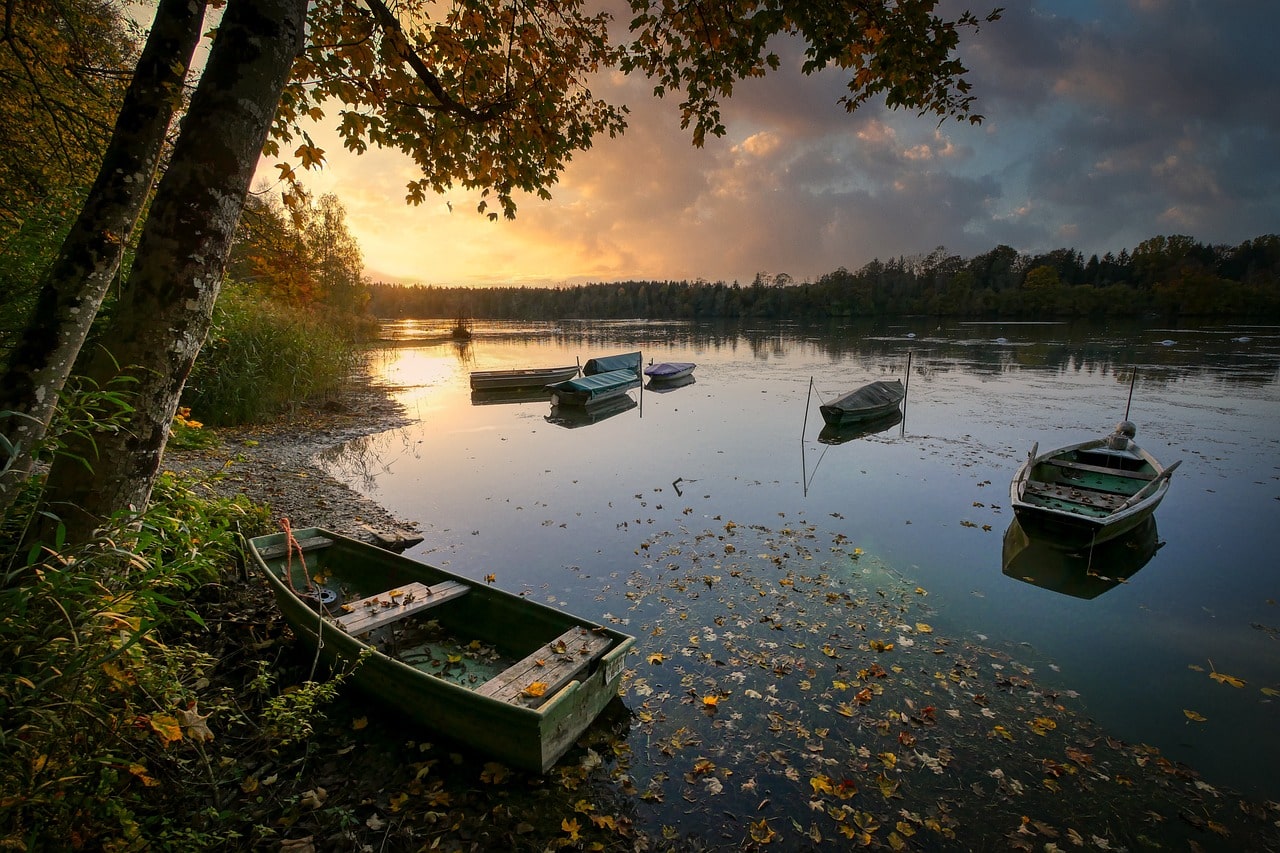Mount Fuji, Japan’s iconic peak, towers majestically over the Chubu Region, offering breathtaking views and a wealth of recreational activities. Dominating the island of Honshu, Mount Fuji stands at 12,389 feet above sea level and is flanked by the Fuji Five Lakes—Motosu, Kawaguchi, Yamanaka, Shoji, and Sai. These lakes, known locally as Fujigoko, were formed by ancient lava flows from Mount Fuji’s historic eruptions, creating serene reflecting pools that enhance the region’s scenic beauty. The area is a significant tourist destination, attracting visitors who enjoy its natural beauty and recreational opportunities.
Lake Motosu
Lake Motosu, or Motosu-ko, is the least developed of the five lakes and the hardest to access by public transportation. Despite this, it draws visitors for its stunning views of Mount Fuji, particularly the scene depicted on the old 5000 yen note. This lake, Japan’s ninth-deepest at 459 feet, never freezes due to its constant water temperature of 39 degrees. The eight-mile shoreline offers several camping areas, making it a favorite among nature enthusiasts.
Lake Kawaguchi
Lake Kawaguchi, or Kawaguchiko, is the most accessible and developed lake in the Fuji Five Lakes area. It features numerous hotels, public hot springs baths, restaurants, and gardens. The Kachi Kachi Ropeway offers a scenic route to the summit of Mount Tenjo, providing stunning views of both Mount Fuji and the lake. The lake’s eight-mile shoreline is home to various cultural festivals and events, including the Kawaguchiko Herb Festival. The island on Lake Kawaguchi and the view from Kawaguchiko-Ohashi Bridge are particularly notable.
Lake Yamanaka
The largest and easternmost, Lake Yamanaka is a center for outdoor activity. At 3,217 feet above sea level, it is the highest of the lakes and attracts young people for wakeboarding, water skiing, tennis, and boating. The area is well-developed with small villages, spas, campgrounds, restaurants, and public hot springs baths. The nearby Hana-no-Miyako-Koen Flower Park and the winter fishing for freshwater smelt add to its allure.
Lake Sai and Lake Shoji
Lake Sai, or Saiko, and Lake Shoji, or Shoji-ko, are connected by underground water discharges and share a common elevation of 2,951 feet. Lake Sai is known for its deep blue color and the mysterious Aokigahara Jukai Forest along its western banks. This less-developed lake offers hiking trails, campgrounds, and nearby caves such as Ice Cave, Wind Cave, and Bat Cave, popular tourist attractions.
Lake Shoji, the smallest of the five lakes with a 1.5-mile shoreline, has a long history as a tourist destination. It is popular for fishing, particularly for herabuna, or crucian carp, from the remnants of past lava flows just above the water.
Recreational Activities and Attractions
The Fuji Five Lakes area offers many activities, including hiking, cycling, windsurfing, water skiing, and swimming. The lakes’ serene surfaces provide perfect reflections of Mount Fuji, enhancing the region’s scenic beauty. Public transportation makes most lakes easily accessible, with Lake Motosu being the exception.
Tourists can explore the cultural festivals, lush botanical gardens, and traditional villages that dot the area. For those seeking adventure, the region offers professional tour guides and assistance for climbing Mount Fuji or exploring the many scenic spots and cultural locations.
The area has various lodging options, including onsens, inns, hotels, guest cottages, and campgrounds with cabins for rent. The region’s appeal is further enhanced by a major amusement park near the lakes and Mount Fuji, featuring several large roller coasters, including one of the world’s highest.
Environmental and Historical Significance
The Fuji Five Lakes hold historical and environmental significance. Created by lava flows from Mount Fuji’s eruptions, these lakes have become a crucial part of the local ecosystem and tourism economy. The traditional Japanese appreciation for natural beauty brings thousands of tourists to the area each year to enjoy its scenic and recreational offerings.
In conclusion, Mount Fuji and its five scenic lakes offer visitors a unique and unforgettable experience. Whether climbing the majestic peak or exploring the serene lakes, this region offers a perfect blend of natural beauty and recreational activities. A visit to the Fuji Five Lakes is a must for anyone traveling to Japan, promising a once-in-a-lifetime adventure.

